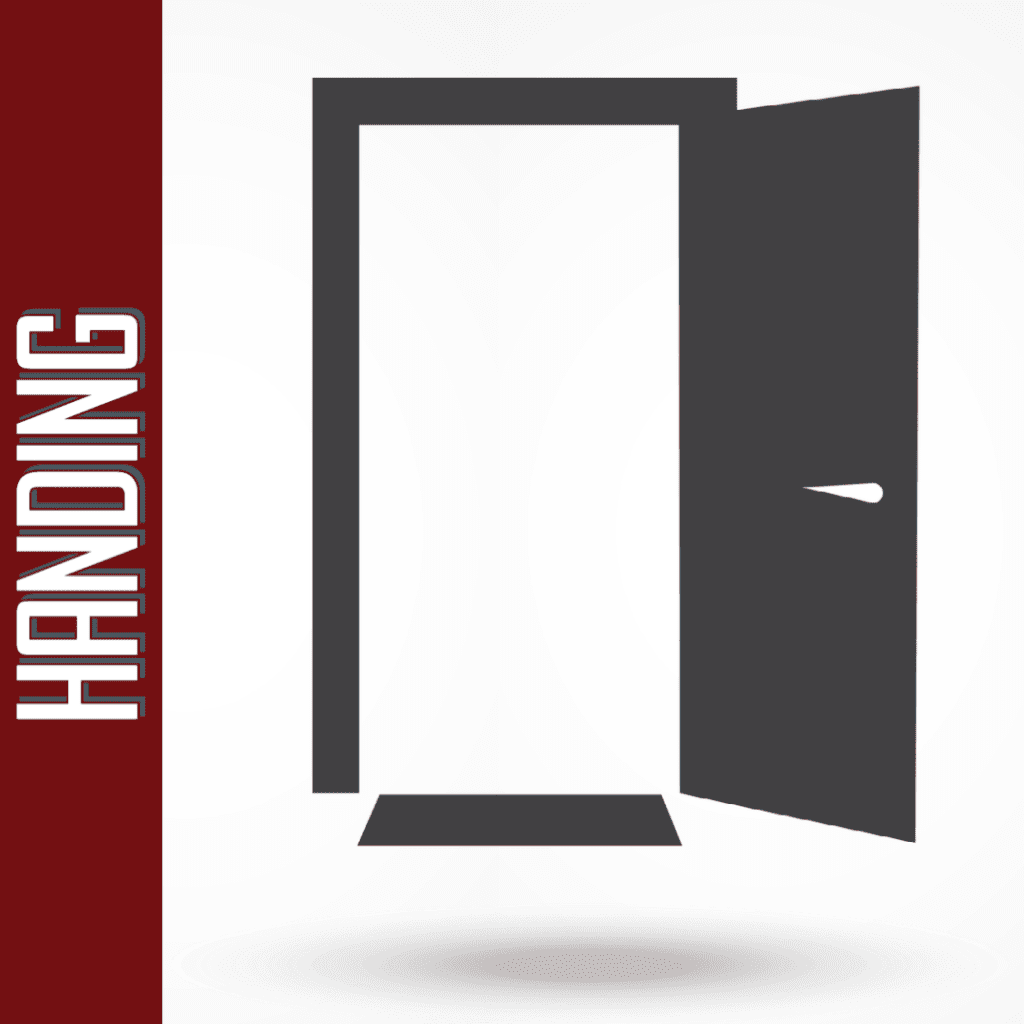
A door’s handing tells us the path of its swing and is determined by the orientation of the
door and the location of its hinges. Certain hardware that can be added to doors might
be handed as well.
Getting the handing of a door correct is crucial to buyers, installers, and hardware
users. If misunderstood during any step of the process, the result may equal a
backward installation of hardware, frames, or doors.
The “secure side” of a door is the side that requires a key for entry. The “secured side”
is the opposite, making it the side that is protected.
To determine the handing of a single door, observe the secure side and notice on which
edge the hinges reside. If the door’s hinges are positioned on the left of the door’s
secure side and the door opens inwards, allowing you to walk through, then it’s
classified as a left-hand door. However, if the hinges are on the left and the door
swings toward you, it would be considered a right-hand reverse door.
The basic classifications of single-door handing are: Left Hand Door Swing (LH), Right
Hand Door Swing (RH), Left Hand Reverse Door Swing (LHR), and Right Hand
Reverse Door Swing (RHR).
Establishing the handing of double doors is more complex. Firstly, decipher which door
side and panel require a key for entry. With two panels, there is one “active leaf” and
one “inactive leaf”. The inactive leaf is commonly left intact and secure while the active
leaf generally has the locking hardware and is the first panel to open.
Once the active and passive “leaf” or “door” is identified, determine the swing of the
active door and where its hinges are positioned. From the secure side, if the door
swings in and the hinges are situated on the left, then the door is considered lefthanded and if the hinges are located on the right, then the door is considered righthanded. If the hinges are on the left and the door swings toward you it is Right Hand
Reverse. If the hinge is on the right and it swings toward you it is Left Hand Reverse.
The common classifications for double doors are as follows: Left Hand Active (LHA),
Left Hand Reverse Active (LHRA), Right Hand Active (RHA), and Right Hand Reverse
Active (RHRA).
In some cases, double doors can be labeled as “double egress” doors. This occurs
when two doors swing in opposite directions from each other, allowing people to go in
one side and out the other. These doors are typically handed as Left Hand Reverse
Active/Left Hand Reverse Active (LHRA/LHRA). Double egress doors are common in
settings such as hospitals and schools with long corridors that require separation due to
fire codes.
Double acting doors function similarly to double egress doors except both leaves swing
in both directions. Once a lock is chosen for installation, its orientation or 'handing' is
determined by the side from which the door is locked. The handing will indicate that the
door is double acting. For example, a door could be handed as Right Hand - Double
Acting (RH-DA) or Left Hand Reverse - Double Acting (LHR-DA).
Commonly found on hardware submittals, the usage of “to” and “from” in regard to
handing can be perplexing. Some examples include “corridor to classroom” or “corridor
from classroom”. A basic way to understand this terminology is to remember that if
handing is on the push side (RH or LH) the word used will be “to” while if handing is on
the pull side (RHR or LHR) the word used will be “from”.
Our team of experts is here to help you understand the handing process. We know the
ins and outs (pun intended!) so we can keep it simple for you. Additionally, we are well-versed in exceptions to the rules of handing and will be able to help you navigate any
confusion you may approach.
The value of seeking expertise from Unified will save you the pain of miscalculations
and offer efficiency. As always, our difference always delivers and never disappoints.